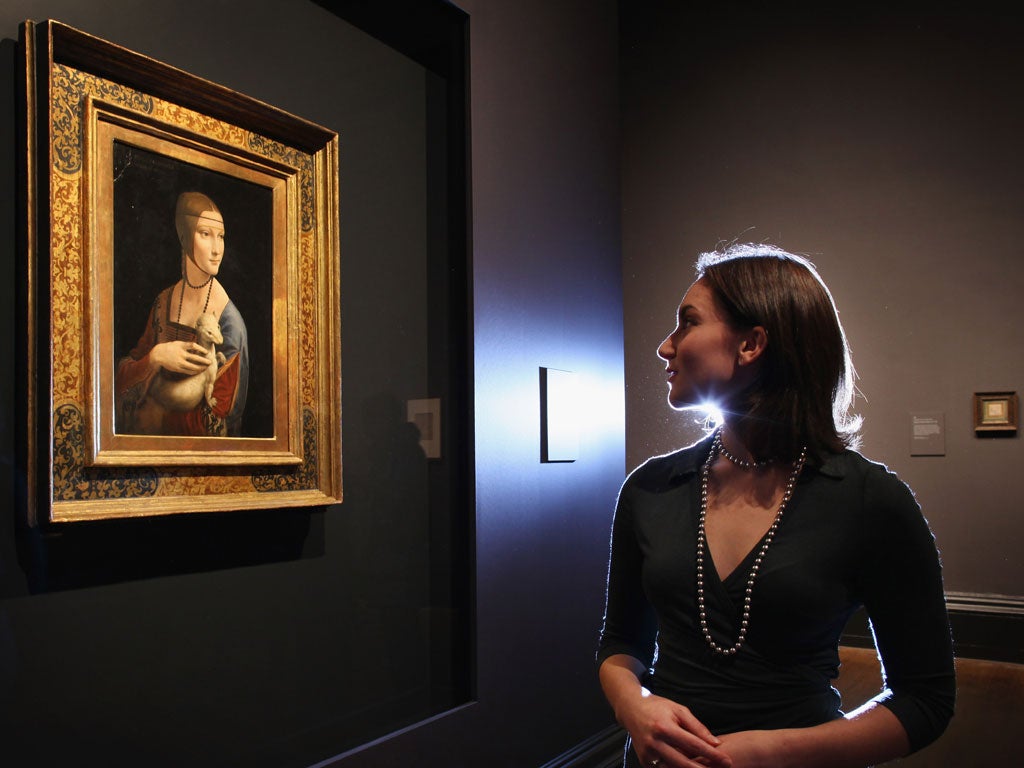Leonardo: What’s a show like you doing in a space like this?
Leonardo da Vinci deserves better than the National Gallery’s basement,

Last week the national museums and galleries were celebrating 10 years of free admission, hard fought for by some. The trustees of the National Gallery, however, had been aloof from that debate. They had never charged, and when in the 1970s Edward Heath suggested they might like to be able to, they not only eschewed the idea, they said they did not want to do so at any time in the future. The public should never have to pay to see pictures they already owned.
It makes a kind of ironic obscenity of the National Gallery's record-breaking loan exhibition, Leonardo da Vinci: Painter at the Court of Milan, for which tickets are circulating on the black market for 16 times the cover price of £16. What is far worse, though, is that those lucky enough to be able to get into the "once in a lifetime show" have to see it in dingy, cramped rooms two floors below ground level, space that was never meant for exhibitions, let alone blockbusters like the Leonardo.
This exhibition has been many years in the making, and these pictures garnered from public and private collections around the world will never be seen together again. Millions ought to be able to enjoy them; as it is 250,000 might have done so by the time the exhibition ends on 9 February. And the logistics of handling a three-hour daily queue of the hopefuls are a nightmare for gallery staff.
It need not have been like this. The Sainsbury Wing, opened in 1993, was built without a proper temporary exhibition space, but provision was made later that could have put this glaring omission right. Towards the end of the 1990s, a hotel behind the National Gallery came on the market and the trustees bought it as a capital asset. Five or so years later, with staff complaining that there were wonderful touring exhibitions they could not host because of the lack of space, the administration drew up plans for converting the hotel into a multi-storey exhibitions centre.
But for reasons that have remained obscure, the trustees threw the plans out. There were more urgent priorities, such as the £17m East Wing development for the permanent collection, and the saving of a Raphael for the nation. It may be significant that shortly after that the director, Charles Saumarez Smith, left after reported but unspecified disagreements with the chairman of the trustees, and is now chief executive of the Royal Academy.
The truth is that the needs and wants of the transitory exhibition-going public, as opposed to the more reliable gallery-familiar art lovers, have never been a major concern for the subsidised national art institutions. The British Museum built its £100m Millennium Court without a temporary exhibition space, and has had to make the best of the Round Reading Room, unneeded since the departure of the British Library. The Tate Gallery at Millbank only addressed the question with the latest extension that opened in 2001. The V&A, despite its £150m, 10-year development programme, will not have a proper gallery for passing shows until its new courtyard development is completed in 2015.
Meanwhile the Royal Academy, the only major visual art venue in London that isn't subsidised and has no permanent collection to speak of, was more in touch with their audience for whom stunning shows and up-to-date display facilities were the first priority, before restaurants and interesting staircases, and went for it with blockbusters of their own like the current Degas and the Ballet: Picturing Movement the success of the season until Leonardo.
The truth is that the National Gallery and other subsidised national museums and galleries, as they rejoice in their free admission to the permanent collections, have never understood the science of popular temporary exhibitions.
Simon Tait is editor of 'ArtsIndustry' magazine
Join our commenting forum
Join thought-provoking conversations, follow other Independent readers and see their replies
Comments